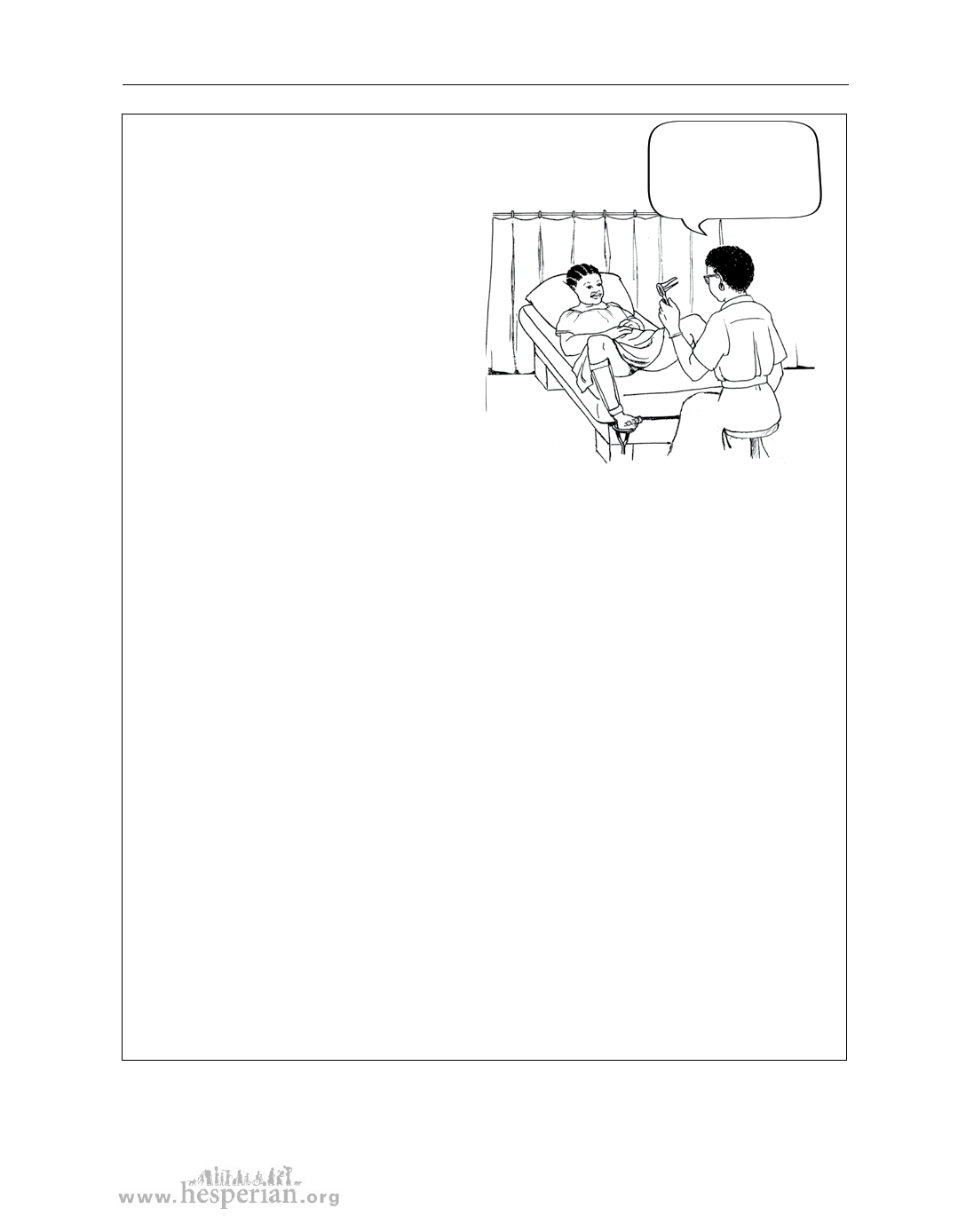
The pelvic exam 131
Steps of the pelvic exam:
1. The health worker will look
at your outer genitals for any
swelling, bumps, sores, or
changes in color.
I am going to use
this speculum to
look inside your
vagina now.
2. Usually, the health worker
will put a speculum into your
vagina. A speculum is a small
metal or plastic tool that holds
the inside of the vagina open.
She can then examine the walls
of the vagina and the cervix
for swelling, bumps, sores, or
discharge. You may feel slight
pressure or discomfort with the
speculum inside, but it should not hurt. The exam is more comfortable if
your muscles are relaxed and your bladder is empty.
3. If the clinic has laboratory services, the health worker should do a Pap test
for cancer and, if needed, tests for STIs. To do a Pap test, the health worker
uses a small, rounded stick to scrape a bit of tissue off the cervix. This is not
painful. You should feel only a little pressure. The sample of tissue is sent to
a laboratory where it is checked for signs of cancer. If cancer of the cervix is
found and treated early, it can almost always be cured.
4. After the health worker removes the speculum, she will put on a clean
plastic glove and put two fingers of one hand into your vagina. She will
press her other hand on your lower belly. In this way she can feel the size,
shape, and location of your womb, tubes, and ovaries. This part of the exam
should not be painful. If it is, tell her. It may mean something is wrong.
5. For some problems, the health worker may need to do a rectal exam. She
will put one finger into your anus and one finger into your vagina. This
exam can give the health worker more information about possible problems
of the vagina, and of the womb, tubes, and ovaries. The rectal exam will be
easier if you push against the health worker’s finger when it first touches
your anus—as if you are passing stool. This will relax the muscles around
your rectum so the exam is less uncomfortable.
A Health Handbook for Women with Disabilities 2007